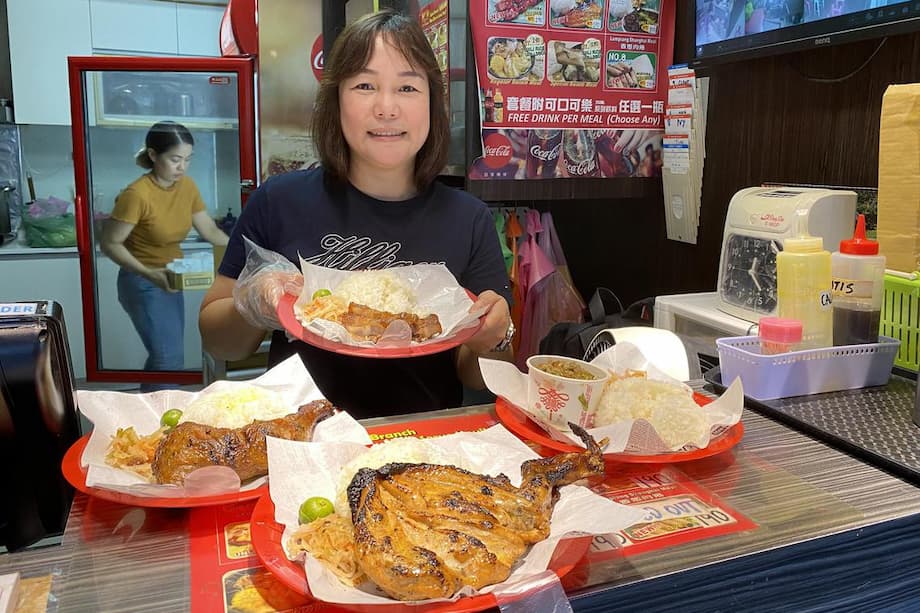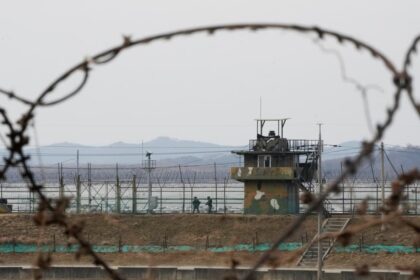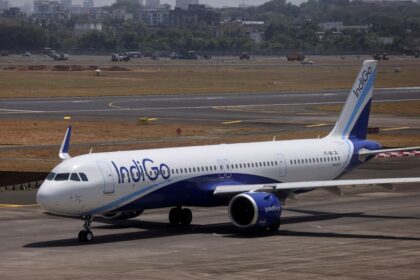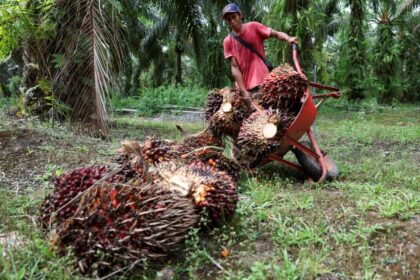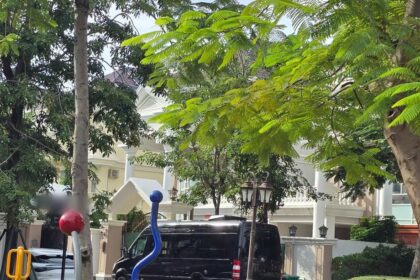Growing connections despite rising friction
Filipino interest in Taiwan is climbing fast, and it is showing up in airports, classrooms, and neighborhoods across the island. In 2024, Filipinos became the top source of visitors from Southeast Asia to Taiwan, overtaking Malaysia and Singapore. Tourism campaigns in the Philippines, the popularity of Taiwanese pop culture, and Taiwan’s visa free entry for Philippine passport holders have helped drive the surge. Manila moved to reciprocate by allowing Taiwanese tourists to enter the Philippines without a visa for short stays starting in 2025. Travel is only one piece of a much larger story. Unofficial ties between Taiwan and the Philippines are widening despite sharper rhetoric and incidents across the Taiwan Strait and in the South China Sea.
- Growing connections despite rising friction
- Why Manila and Taipei are drawing closer now
- What changed in Manila’s approach to unofficial contact
- Trade, work and study links are thickening
- Beijing’s warnings and regional pushback
- The debate inside the Philippines
- What a Taiwan crisis would mean for the Philippines
- What to watch next
- Key Points
Although the Philippines follows the one China policy and has no formal diplomatic relations with Taipei, economic, educational, and social links continue to deepen. Nearly 200,000 Filipinos live and work in Taiwan, many in factories and caregiving. Philippine officials and business groups count more than 600 Taiwanese companies operating in the Philippines in manufacturing, logistics, and services. Trade is rising too. Bilateral commerce reached about 6.71 billion US dollars in 2024, and Taiwan ranked among the Philippines’ top ten trading partners. Taiwan was also the Philippines’ eighth largest export market in 2024. These bonds are expanding at a time when both sides seek stability and steady growth in a region under mounting pressure.
For policymakers in Manila and Taipei, practical cooperation has become a way to build trust while avoiding moves that might trigger diplomatic blowback. Scholarships and training have pulled more Filipino students to Taiwanese universities, especially in science, engineering, and semiconductor related fields. Philippine communities in Taiwan, including a lively Little Manila in Taipei, are thriving as businesses promote food, music, and culture. Many Filipinos who live and work in Taiwan say they want stronger collaboration and a calm neighborhood, even as big power rivalry intensifies.
Why Manila and Taipei are drawing closer now
China’s maritime actions around Philippine waters, including ramming and water cannon incidents near contested shoals, have stiffened Manila’s stance in the South China Sea. At the same time, concern over a potential Taiwan crisis has moved closer to the center of Philippine security planning. Geography drives that urgency. The Bashi Channel and the Luzon Strait, which separate Taiwan from the northern Philippines, are narrow sea lanes that carry trade and military traffic between the western Pacific and the South China Sea. Philippine leaders argue that any conflict or blockade in those waters would touch their shores and their citizens almost immediately.
Analysts at RAND and other research institutions say the Philippines has started shifting from an inward focus on insurgencies to external defense. The government expanded US access under the Enhanced Defense Cooperation Agreement (EDCA) to nine sites, with several in northern Luzon closest to Taiwan. President Ferdinand Marcos Jr has visited units in the north and emphasized the need to prepare for external threats. Manila’s new Comprehensive Archipelagic Defense Concept seeks to improve maritime surveillance and deny intrusions in key straits. US and Philippine forces have supported a new facility on Itbayat in Batanes, the country’s northernmost inhabited island, to store emergency supplies and improve logistics. Joint drills in and around Batanes, including those integrated into the annual Balikatan exercise, increasingly practice scenarios that would matter in a cross strait emergency. The Philippines also built a new coast guard station on Itbayat after noticing Chinese naval activity following high profile visits to Taipei in 2022. Deployment during exercises of systems like the US Army Typhon, which can fire anti ship and land attack missiles, signals a budding focus on deterrence in the northern approaches.
These steps reflect a calculation in Manila that the cost of inaction may be higher than the risks of limited cooperation with allies. The government still faces trade offs, since resources dedicated to the northern front reduce what is available for day to day standoffs in the South China Sea. Political change in Washington or Manila could alter the tempo of cooperation. Even so, growing pressure on Taiwan keeps cross strait security on the Philippine agenda and pushes planners to think about contingencies that were once abstract.
What changed in Manila’s approach to unofficial contact
For decades, Philippine officials were barred from visiting Taiwan in any capacity that looked official. That changed in April 2025, when Manila loosened the rules. Under a new policy, most government officials, except the president, vice president, foreign affairs secretary, and defense secretary, may travel to Taiwan for economic, trade, or investment related events if they use regular passports and avoid their formal titles. The move, published in the Official Gazette, aims to seek investment and job opportunities while keeping faith with the one China policy. Both sides continue to work through representative offices in Taipei and Manila, which function like de facto embassies.
Signals of warmer ties preceded that change. In January 2024, President Marcos congratulated Lai Ching te after his victory in Taiwan’s presidential election, a rare public message from a Philippine leader that drew criticism from Beijing. Taipei has encouraged stronger soft power outreach in Southeast Asia through its New Southbound Policy, and the Philippines has responded with more student exchanges, tourism cooperation, and business matchmaking.
Beijing has pushed back against activities it views as elevating Taiwan’s status. Taiwan’s foreign minister, Lin Chia lung, visited Manila in late August 2025 while leading a trade delegation that discussed plans for a Taiwan Philippines Economic Corridor. China lodged protests and accused the Philippines of providing a platform for separatists. In response, the Philippine Department of Foreign Affairs said it did not formally recognize any member of the group as an official from Taiwan and avoided public meetings with senior Philippine officials.
Defense Secretary Gilberto Teodoro, asked about warnings from Beijing, said China’s so called red line does not apply on Philippine soil. He stressed that the Philippines remains a free and independent country that follows its own laws and policies. He argued that Beijing should not use its preferences to limit investment, humanitarian efforts, disaster response, or cultural activity in the Philippines.
Defense Secretary Gilberto Teodoro said China’s red line only applies within Chinese territory and should not be imposed on the Philippines. He argued that the one China policy cannot be interpreted by another state to dictate events inside Philippine territory.
Trade, work and study links are thickening
Travel is the most visible sign of closer ties. Filipinos were the leading Southeast Asian visitors to Taiwan in 2024, helped by direct flights, social media buzz, and visa free entry. Manila answered with a 14 day visa waiver for Taiwanese visitors. These rules have boosted tourism businesses in Taipei, Taichung, and Kaohsiung, and have given Filipino travelers a new set of short haul options. On weekends in Taipei, Filipino food, music, and church services fill pockets of the city often called Little Manila. Restaurant owners and shopkeepers describe a steady stream of customers curious about Philippine cuisine and culture.
Labor and education form a deeper bond. Nearly 200,000 Filipinos in Taiwan support families at home through remittances, mainly from work in electronics, shipyards, caregiving, and construction. More Filipino students are choosing Taiwanese universities. Their numbers more than doubled in five years, many entering science, engineering, and chip related programs under scholarship. Graduates say exposure to Taiwan’s advanced manufacturing helps them compete in global supply chains and brings those skills back to Philippine firms.
Business ties are expanding as manufacturers refit supply chains for resilience. More than 600 Taiwanese companies operate in the Philippines, from electronics assembly to automotive parts and e commerce logistics. Total trade reached about 6.71 billion US dollars in 2024. Taiwan is among Manila’s top trading partners, and it became the Philippines’ eighth largest export market. Taiwan’s New Southbound Policy, launched to reduce reliance on the mainland by building ties across South and Southeast Asia, has given both sides a platform to coordinate on trade, technology, agriculture, and healthcare.
Chips, supply chains and the New Southbound Policy
Semiconductors are central to the conversation. Taiwan is the world’s hub for advanced chip manufacturing, and Philippine leaders want more of that ecosystem to touch Luzon and Visayas through training, supplier development, and research links. Analysts have floated the idea that a firm like TSMC could someday set up training facilities or specialized operations in the Philippines. Experts at the Global Taiwan Institute say such moves would likely draw scrutiny from Beijing. Even without anchor factories, both economies can profit from a stronger pipeline of chip design talent, reliable electricity and ports, and supplier parks that knit Philippine assembly and testing to Taiwan’s foundry strengths.
Beijing’s warnings and regional pushback
As Manila’s rhetoric hardened, Beijing responded in public and private. After President Marcos told an Indian broadcaster that the Philippines would be drawn into a war over Taiwan because of geography and the need to protect Filipino nationals, China’s foreign ministry warned the Philippines against “playing with fire.” The president said he was perplexed by that line, arguing he had stated a basic fact. His visit to India included security discussions with Prime Minister Narendra Modi and agreement to elevate ties. The Philippines has purchased BrahMos cruise missiles from India and is seeking more defense cooperation. Indian warships have begun joint patrols with the Philippine Navy in the West Philippine Sea, a move likely to anger China. Philippine officials have also complained about suspected rocket debris from a Chinese launch splashing near a western province and alarming local fishers.
In remarks carried by Indian outlet Firstpost and later discussed by regional media, the president underscored the humanitarian dimension and the reality of geography. He described the large Filipino community in Taiwan and the duty to bring people home if conflict breaks out.
President Ferdinand Marcos Jr said: “If there is an all out war, then we will be drawn into it.” He added after a separate warning from Beijing: “I was just stating facts.”
The United States has repeatedly affirmed that its mutual defense treaty with the Philippines covers attacks on Philippine armed forces, public vessels, and aircraft anywhere in the South China Sea. Joint exercises have grown in size and complexity, with Japan and Australia participating more often. Manila says these activities are defensive and focused on maritime safety, humanitarian response, and deterrence.
China also protested after Taiwan’s foreign minister’s trade delegation visited Manila in August 2025. Beijing issued statements calling the Philippines unstable and warned its citizens about travel to the country. Philippine officials replied that they had not recognized any individual in the group as a Taiwanese official and that no formal meetings with cabinet secretaries took place. Taiwan’s side emphasized economic cooperation and avoided public commentary on Beijing’s objections.
The debate inside the Philippines
Inside Manila, the Taiwan issue has energized a policy debate that cuts across party lines. Some voices, including former president Rodrigo Duterte and several progressive groups, warn that deeper coordination with the United States could drag the Philippines into a conflict and make northern provinces a target. Others argue that visible cooperation now, paired with strong communication with China, can deter escalation and improve Manila’s bargaining position in the South China Sea. The government’s National Security Policy notes that an emergency in the Taiwan Strait would affect the Philippines directly because of proximity and the number of Filipinos in Taiwan.
Commentary in The Diplomat and China US Focus points to genuine capability constraints. The armed forces struggle to cover both day to day pressure at sea and new missions in the north. Any new deployments near the Bashi Channel could heighten tension. At the same time, many officials believe that modern sensors, coastal defense batteries, and repairable infrastructure would reduce the risk of miscalculation. They support calibrated cooperation with the United States and partners while seeking space to lower friction with Beijing.
Analysts at the National Bureau of Asian Research describe a broader test of statecraft. The Philippines wants to defend maritime rights, protect overseas workers, and sustain growth without becoming over reliant on any single partner. Manila is seeking defense and economic diversification with Japan, Australia, Canada, New Zealand, several European countries, and India, while keeping ASEAN diplomacy active. Domestic politics complicate the picture. Elite divisions, tight budgets, and gaps in institutional capacity can slow reforms and undercut long term planning. The 2025 midterms and the lead up to the 2028 presidential election add uncertainty to foreign policy signaling.
What a Taiwan crisis would mean for the Philippines
The Luzon Strait is one of Asia’s most strategic waterways. Ships pass between the Pacific Ocean and the South China Sea through the Bashi Channel, where currents are strong and the sea can be rough. A cross strait conflict or blockade would likely disrupt this traffic. Oil and gas shipments to East Asia could face delays. Insurance costs for ships calling at Philippine ports could spike. Philippine exporters and importers would deal with congestion, rerouting, and higher freight prices. There would be ripple effects on food, fuel, and manufacturing, as well as the global semiconductor supply chain that links Taiwan’s foundries to assembly and testing sites in the Philippines and across Southeast Asia.
Humanitarian concerns would arrive first. Manila must be ready to evacuate as many as 160,000 to 200,000 Filipino workers and their families from Taiwan, a massive logistical task that would require ships, aircraft, and prepositioned supplies. The joint facility on Itbayat and expanded depots in northern Luzon are intended to help with rapid delivery of food, fuel, and medical aid. Philippine authorities would also need plans to receive people arriving by sea from Taiwan, manage temporary shelter, and reunite families, all while guarding against traffickers and misinformation that can flourish during crises.
Security planners worry about attacks that fall short of open war. Cyber intrusions, GPS spoofing, and sabotage against power or telecom networks could target Philippine infrastructure. Swarms of militia vessels could harass coast guard ships and block resupply runs in the West Philippine Sea. Regular training and joint exercises help agencies practice complex tasks such as multiday evacuation, convoy protection, and coordination with local governments in Cagayan, Ilocos Norte, and Batanes.
Evacuation and contingency planning
Recent Balikatan drills featured scenario planning for evacuation operations, maritime interdiction, and disaster response in the north. Authorities have started staging more fuel, food, and communications equipment on Batanes and on airfields in northern Luzon. The coast guard is adding vessels and improving satellite communications to maintain a common picture of who is operating in the strait. Local governments have mapped shelters, airfields, and ports that could host temporary camps and serve as launch points for rescue flights and ferries.
The stakes are not abstract for families who rely on remittances. Every decision about drills, deployments, and diplomacy carries consequences for workers in Hsinchu, Taoyuan, and Kaohsiung, and for those who depend on their income in Manila, Cebu, and Davao. Coordination between Philippine and Taiwanese representative offices on charter flights, visas, and emergency hotlines will matter as much as headlines about missiles or ships.
What to watch next
Watch for more joint exercises in northern Luzon, details about equipment prepositioning, and any follow on deployments connected to regional drills. Early signs of closer trilateral coordination with partners such as Japan and Australia would also be significant. On the diplomacy side, the effect of Manila’s new rules for official travel to Taiwan will become clearer as trade missions and investment forums resume. The response from Beijing, and from local leaders in Luzon provinces that host EDCA sites, will shape the tempo.
On the economic front, track student visas, scholarships in science and engineering, and industrial parks aimed at electronics suppliers. Any concrete move to expand chip related training or facilities in the Philippines would show both ambition and caution in balancing opportunity and risk. Success will be measured by calm seas, open lines of communication, and daily life that stays steady for communities on both sides of the Luzon Strait.
Key Points
- Filipinos became the top source of Southeast Asian visitors to Taiwan in 2024, helped by visa free travel, and Manila extended a short stay visa waiver to Taiwanese visitors in 2025.
- About 200,000 Filipinos work in Taiwan, while more than 600 Taiwanese firms operate in the Philippines, and bilateral trade reached roughly 6.71 billion US dollars in 2024.
- Manila follows the one China policy, yet has expanded unofficial ties with Taiwan in education, labor, and commerce to build practical cooperation.
- The Philippines eased a decades old restriction in April 2025 to allow most government officials to visit Taiwan for economic and trade activities using regular passports.
- Security planning has shifted outward, with nine EDCA sites now available to US forces and more exercises in Batanes and northern Luzon focusing on scenarios relevant to the Taiwan Strait.
- China warned the Philippines after President Marcos said a Taiwan war would inevitably affect Manila; the president said he was stating facts about geography and Filipino nationals in Taiwan.
- Beijing protested Taiwan’s foreign minister’s trade delegation visit to Manila; the Philippine foreign ministry said it had not recognized any delegate as an official.
- Domestic debate in the Philippines continues over the pace and scope of cooperation with the United States and how to avoid becoming a target while deterring aggression.
- A Taiwan conflict would disrupt shipping in the Luzon Strait, stress supply chains, and force large scale evacuation of Filipino workers from Taiwan.
- Manila is trying to diversify defense and economic partnerships with countries such as Japan, Australia, India, and European partners while keeping ASEAN diplomacy active.


